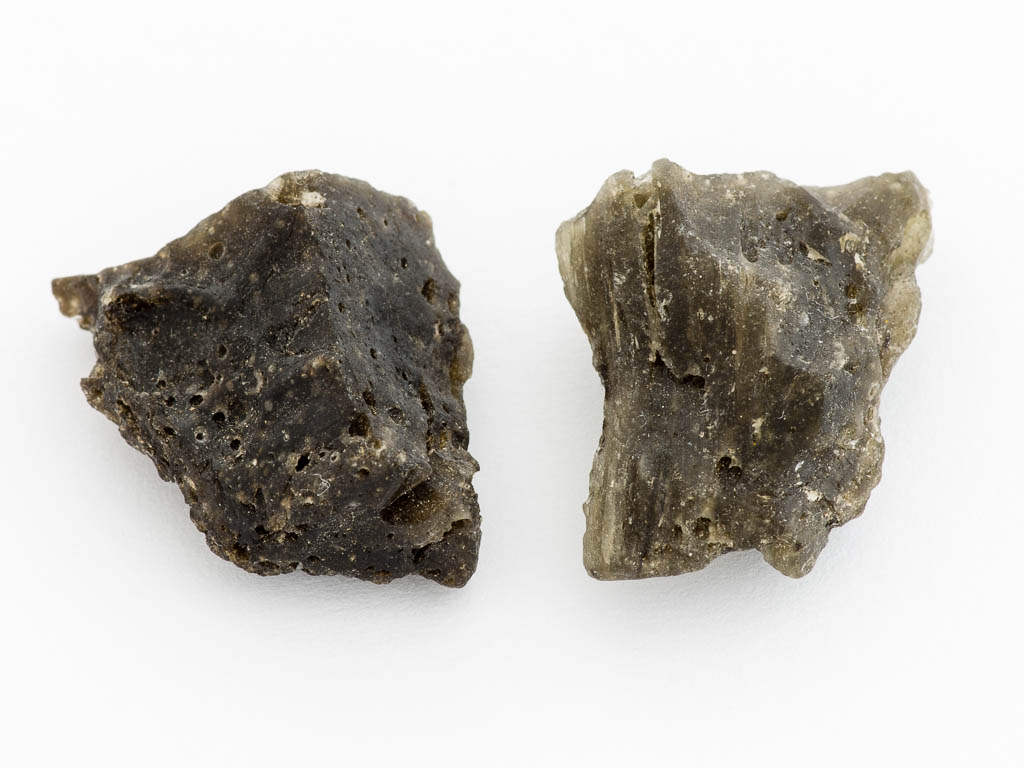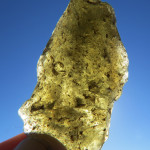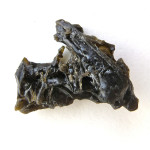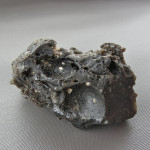Darwin glass? What is that?
Even among people who like to fossick and prospect, not everyone has heard of this uniquely Tasmanian material. Darwin glass is an impactite. It’s a glass made up of a part of the earth’s crust that melted when an iron meteorite crashed into western Tasmania almost one million years ago. This impact generated a large amount of energy (enough to melt the crust, picture probably the equivalent of several atomic bombs), and created the Darwin Crater. Since the impact, the crater has had over 800,000 years to fill up with sediments, so it’s hard to spot on the satellite images or on a map. The approximate coordinates are 42°18’11.7″S, 145°39’34.6″E.
- Pale green Darwin Glass. Photo courtesy of The Rare and Beautiful
- Dark green Darwin Glass. Photo courtesy of The Rare and Beautiful
- Dark green Darwin Glass. Photo courtesy of The Rare and Beautiful
The result of the meteorite impact was a strewn field to the west of the crater, with glass that ranges in colour from white, through pale green, to dark green or even black. The main hypothesis is that the darker pieces contained more of the meteorite in them, and the lighter ones were mostly made up of melted earth rocks. The shapes and sizes of the individual Darwin glass fragments are hugely variable. The shape and colour of the pieces of glass is such that early prospectors called them ‘petrified kelp‘.
For more on the origin of Darwin glass, you can read Mel and Christo’s blog post on it. Spikey Riddoch also wrote a great little article on the Tasmanian Geographic, with some excellent pictures. Finally, there is an old report on the Mineral Resources Tasmania library that goes over what was known about it a hundred years ago.
Can you fossick for Darwin glass?
I’ve heard many people say that you can’t get Darwin glass any more these days, but that’s not really true.
Unfortunately, much of the area where Darwin glass has been found IS out of bounds nowadays, as it is inside the Franklin-Gordon Wild Rivers National Park (part of the Tasmanian Wilderness World Heritage Area). However, some of the area to the west of the park boundary is available for fossicking and prospecting, and is accessible through the Kelly Basin Road.
If you’re prospecting under a Prospecting Licence, then you’re allowed to prospect in the West Coast Range Regional Reserve, which is mostly west of the road. One thing to note if you have a prospecting licence is that most of the area outside the World Heritage Area is highly prospective for minerals, and usually under tenement. You can use MRTmap to overlay the tenements and see who you need to contact to arrange permission. Since Darwin glass isn’t an economic mineral, you should hopefully not have too much of a hassle.
The best areas were reputedly middle altitude hills and east-facing slopes, approximately west-northwest of the crater site. Most of the grass is near the surface among gravels, so areas where natural erosion, such as by rain, is washing away tracks and washouts is worth a go. The old report on Darwin glass I linked to above has one of the best descriptions of how and where the glass is found.

Location of Darwin glass. Map courtesy of LISTmap.
Could you buy some?
If driving to Queenstown and beyond isn’t really your thing, then some is often available for sale online, in sites like Ebay. You might try Lunaris Gemstones, in Lune River, or their Salamanca Market stall. Mel and Christo’s The Rare and Beautiful often have a good selection for sale, but beware: it’s in high demand, and not too easy to get, so the prices are high!
If you like the content at Apple Isle Prospector, feel free to get in contact, or leave a comment. If you enjoyed this article, then please let others know by sharing it on Facebook or liking our Facebook or Twitter pages:




